ENVIRONMENTAL PROTECTION COMMITTEE MINUTES – JUNE 13, 2012
MICHAEL E. PLOCHOCKI, CHAIRMAN
Members Present: Mr. Meyer, Mrs. Tassone
Members Absent: Mrs. Rapp, Ms. Williams
Also Attending: see attached list
Chairman Plochocki called the meeting to order at 9:04 a.m. A motion was made by Mrs. Tassone, seconded by Mr. Meyer to waive the reading and approve the minutes of the previous committee meeting. MOTION CARRIED.
1. LAKE IMPROVEMENT: Tom Rhoads, P.E., Commissioner
a. ACJ Update
-
Monthly report (on file with the Clerk)
-
Topics: ongoing with total max daily load of phosphorous to lake; status – things not changed since last month
-
TMDL – still in draft; all considerable improvements at Metro and additional improvements required are in the neighborhood of $37 mil to satisfy TMDL requirement for phosphorous – ability to avoid $700 mil of added expenses
-
Anticipate State will complete and finalize TMDL by end of this month; County must submit to state and EPA a letter affirming to meet the new TMDL requirements
-
Green infrastructure – more interesting is evolution of project
-
Example – City lot 4; North State Street Project; 8 quality bidders on project; all have worked on green projects for County before – competition giving excellent feedback and pricing feedback; better competition equals better pricing
-
Starts to layer green improvement fund - public/private sector work; awarding grants to private property owners; pay them for a portion of the green improvements they make on their property to save the rain
-
Success of this program and market engagement (shift to green) – in process of evolving from the April 2011 version 2.0 of the project to next month WEP and County Executive will be announcing version 3.0
-
3.0 will ratchet down on costs to pay per gallon due to market indications and competition; public investment of gallons of capture will go down
-
Caps for max cost of projects will be revised; purpose – instead of small projects, will see larger capture projects
-
All designed to bring in gallons of capture to a benchmark
-
Capture coming in between 6 and 13 x more than the green; green capture and GIF capture very sustainable
-
Next month have people from CH2M Hill come in to talk about vacant lot program; one bundle of vacant lots in final design phase going out for bidding shortly; 3 lot bundle packaged together
-
Attached after report are pictures of before and after; tremendous amount of community development
-
Clinton project – inviting committee to come to MOST for meeting in August, then go to trolly lot parking area; now in construction; grey capture at 114 mil gal/year; on top will be parking lot; was going to be regional treatment facility
-
Sewer separation projects – Skunk City and Dinosaur BBQ area
-
Conveyances project and inner sewer septic project coming along
-
Going to be road closures for Harbor Brook CSO Storage and Conveyances Project – State Fair between Hiawatha and Genesee; tremendous soil piles as contractors perform extensive excavation for project
- Green project fact sheets – moving along well; water tree work; Erie Canal Museum green roof coming in nicely
Mr. Rhoads responded to Mr. Meyer that he would check if the library green roof is owned by the City and managed by the County.
- GIF tab – activities with what’s going on; CNY Philanthropy Center
- Provided phosphorus update and update under WWTP tab; discussions of monitoring program
- Provided with graphics of sampling; phosphorous vs. precipitation
- Doing sampling of the lake; don’t weigh large fish because it can break their spine; captured, released after measuring
- Included media coverage for save the rain; concludes with financial updates in the back
2. WATER ENVIRONMENT PROTECTION: Tom Rhoads, P.E., Commissioner; Nick Capozza, Sewer Maintenance and Inspection Engineer
a. A Resolution Calling for a Public Hearing in Connection with Acceptance by the Onondaga County Sanitary District of the Westfield Trunk Sewer from the Village of Manlius, New York
-
Resolution calling for hearing on Westfield trunk sewer; interesting discussion; part of development in Town of Manlius and became discussion with town and village
-
Part of sanitary district; receiving funds for it; when infrastructure started having problems – need to be reconstructed
-
Proposed County of Onondaga take ownership now that it is rehabilitated
-
When it makes sense to take over a trunk sewer from a town or village, the County will vet the sewer lines; how installed, structure, look for deficiencies, and number of houses served
-
Sewer system like highway system – Thruway or Rte. 81 would be trunk and secondary roads off those would be main line sewers
-
Depending on how the trunk sewers were extended, sometimes towns and villages took over those items when the developer installed
-
Decision to take over based on condition and how laid out; generally say yes to take over a trunk line
-
Town flows into village sewer and then Onondaga County sewer; multiple municipalities involved
-
Whenever developer turned over sewers after construction, certain portion connected through town, probably through Intermunicipal agreement to make project move forward; allowed extension and transportation fee for using portion
-
Village owns portion turning over; section the Town of Manlius (one section) - project 5 years old; Town of Manlius and village have oddball property lay out – sewer line goes from town into village sewer; take over the whole section
-
After rehabilitating the sewer, want to have County take over to get rid of intermunicipal squabble over transport fees
-
Serves village and town; interesting discussion; how to equate costs; decided to rebuild then ask county to take over
-
Are other examples in other areas where towns/villages have transport fees – needs intermunicipal agreement
-
To take over depends on infrastructure and lay out; if it’s up to current standards and how it’s laid out; if look at and has lots of deficiencies taking in infiltration and inflow, then tell town to bring up to snuff - look at taking over after
-
Based on intermunicipal issues that arise; residents paying higher sewer use fee to put through village/town; owned and operated by another municipality – request County take over to get rid of intermunicipal agreement
A motion was made by Mrs. Tassone, seconded by Mr. Meyer to approve this item. Passed unanimously; MOTION CARRIED.
b. A Resolution Approving Various Green Infrastructure Projects Located Outside the City of Syracuse in and for the Onondaga County Sanitary District of the County of Onondaga, New York ($3,000,000)
- As part of public hearing of last month; this is the follow through of approval of grant program & bonding of $3 mil
Mr. Meyer wanted to compliment Mr. Rhoads and the executive side on trying to work on the cost per gallon. He hopes it will be a continuing thought on these projects. Mr. Meyer stated the real deal is how to get the levels down and to not have projects based on political arbitrary geography lines.
A motion was made by Mrs. Tassone, seconded by Mr. Meyer to approve this item. Passed unanimously; MOTION CARRIED.
c. A Resolution Authorizing the Issuance of $3,000,000 Bonds of the County of Onondaga, New York, to Pay the Cost of Various Green Infrastructure Projects Located Outside the City of Syracuse in and for the Onondaga County Sanitary District in and for said County ($3,000,000)
A motion was made by Mrs. Tassone, seconded by Mr. Meyer to approve this item. Passed unanimously; MOTION CARRIED.
d. Amending the 2012 County Budget to Accept Funds in Relation to a Project to Develop and Implement an Onondaga Lake and Tributary Water Quality Notification Program and Authorizing the County Executive to Enter Into Agreements to Implement the Project ($118,000)
Mr. Rhoads:
-
Part of County consent order; portion of money paying for consent becomes part of a grant program administered through Onondaga Lake Partnership
-
First time the County made application for grant; eligible for $118,000 of grant money; purpose – CSO activation website; let community know when CSOs are being triggered by event
-
Gives community opportunity to know and understand what the implications are; any wet water recreation and may have to hold off, or find website - see everything is good to go for fishing/boating/waterskiing
-
2 reasons to do – permit conditions are generally an EPA requirement to help community understand
-
700 communities in US have CSOs like this; EPA program goal to let community know how to avoid CSO conditions
-
Done with signage at CSOs; deeper requirements through permits
-
Sewage Right to Know Act kicking around Senate; may pass – would like to be ahead of the curve
-
Don’t want to use local dollars to meet these permit and regulatory conditions, would like to use grant money
-
Currently have swim model which evaluates whole system; when rain events trigger overflows, then merge that with Save the Rain website frontend; very user friendly predictive model; help people understand the conditions of the lake, and if they might need to take precautions
-
Think of how Onondaga Creek was called Killer Creek – heavy rain or event causes bacteria; good portion of the creek is walled off because so many people lost lives from heavy rain; drown by flash floods
-
Want to do better job at communicating; CSO and other risks; asking for approval to accept, allocate towards project
-
If grant wasn’t accepted, it would go to another applicant
Mr. Coburn:
-
County has acquired about $110-120 million dollars of grant funding from the Onondaga Lake Partnership
-
They have not received federal funding for quite a few years
-
Money appropriated by Congress to EPA in 2005; after 7 years, it goes back to Washington
-
At end of September, money is gone and any money not expended is also gone
-
Partnership aware of time; been working diligently to have money fully spent so it does not go back to Washington
-
Partnership - quite a few projects that were in an approved work plan that has to be approved by the EPA
-
Some projects would come in under budget and might have $30-$50,000 to reallocate into another project within the existing approved work plan
-
Partnership had more; failed to count on money that went to USGS for mud boils
-
Have between $225,000 - $250,000 to spend down by the end of the fiscal year
-
Asked people if there were projects that fit within the work plans; brought inquiry to WEP - intent to pursue real time public notification
-
Federal appropriation allocated through Onondaga Lake Partnership; partnership includes federal partners
-
Congressman Walsh appropriated funds to Onondaga Lake and let partnership decide how funds are allocated
-
Competing against other projects to get the funds; receiving 70-75% of all funds
-
If WEP does not spend money, Mark Burger from SWCD received couple million to do agricultural environment management systems; have couple additional projects under approved work plan they can carry out in that time frame
-
2 of the projects for SWCD have been approved totaling $38,000; 3rd possibly to be approved
-
Proposal to do additional bacteria track down on Onondaga Creek – partnership involved in doing bacteria track down because pathogens in creek during dry weather flow; initial phase then additional grant from EPA for second phase
-
Most of this in City of Syracuse; growing interest in doing track down outside of urbanized areas because of elevated areas of bacteria in upper parts
-
Onondaga Environmental Institute proposed doing work in that area; scope and extent of work based on funds available; less funds, less samples; more funds, more sample locations
-
If County does not accept these funds, the money would go to OEI to do bacteria track down
-
County been using ambient monitoring services expenses as match against federal grants; provided very substantial match for partnership; already satisfied any match requirements; ambient monitoring program in work plan
Mr. Rhoads responded to Mr. Meyer that this is just CSO and/or SSOs related to the sanitary sewer system. Mr. Rhoads agreed with Mr. Meyer that the CSO impact can have one number to Metro to say how big the event is and have little to no impact on the north end. Mr. Rhoads stated the purpose of this is to make sure people are aware of the conditions. There will be integrations with the swim model, AMP program and WEP’s real time ring gauges. Coordinate all this technology to provide true predictive information on whether or not the CSOs have been triggered because of a rain storm. Use the stop light methodology: red meaning the CSO is going off right now, yellow means caution for the next 24 to 48 hours (might come in contact with partially untreated sewage). Based on what is acquired from the monitoring program, would try to help reflect and communicate the implications on the downstream areas in the lake water shed. If a small CSO goes off way up stream, what does that mean for the north end of the lake?
Mr. Coburn commented that in the fact sheet it shows other websites who have done this. What someone would see is along the creek it would be a red symbol, and a distance into the creek based on the information, it could be red, then further into the lake where it has not had an impact could be yellow or green. The individual would see the different color codes and sections of the lake. If the pathogens come in at the south end of the lake, they would only last so far, and exist for so long.
Mr. Rhoads commented there is a completely different environment out at the lake and want to start communicating. All the investments the County Legislature is overseeing is making a tremendous change in the lake. This will be a better vehicle to help people understand they can come out and enjoy the lake, and that there is nothing wrong with the park at Willow Bay. The continued investment in the grey and green infrastructure will continue to reduce the number of CSO overflow events; 95% capture required to do for the ACJ. This is another way to communicate with the public about the Save the Rain program.
Mr. Coburn responded to Chairman Plochocki that this project was the only one proposed from WEP. The other proposals are from other members in the partnership, not from the County. Mr. Rhoads stated there will be local share money going to this project if they do not get the grant.
A motion was made by Mr. Meyer, seconded by Mrs. Tassone to approve this item. Passed unanimously; MOTION CARRIED.
e. Update – Total Maximum Daily Load (TMDL)
Chairman Plochocki stated the legislature is happy with the TMDL that has been proposed. The TMDL is saying that the County is getting to a point where it has lowered the phosphorous levels significantly. The County is not being pushed to lower the levels as much as it originally appeared. If the County was pushed, it would cost hundreds of millions of dollars. There are some individuals in the County that do believe that it is time the phosphorous levels should be set lower. One of these individuals is Lloyd Withers. Chairman Plochocki stated he has spoken to Mr. Withers in great lengths, and his knowledge of the lake is vast and impressive. Mr. Withers submitted in writing, objections to the TMDL. Chairman Plochocki asked Mr. Withers to be at the meeting because he is not afraid of dissent. He commented he is not in favor of the TMDL being lowered at this time, but as a long term goal, he does not see it as a bad idea. Chairman Plochocki added that the County Executive’s office feels the same way. He asked Mr. Withers to speak about his knowledge of the TMDL, and the lake’s past; also to have it on record at the meeting, and give legislators an opportunity to ask questions to him about his concerns.
Mr. Withers:
-
Technical discussion reading through TMDL; implications of setting level go beyond expectations for lakes recovery
-
1993 – Onondaga Lake Management Conference; laid out ecological restoration of lake; plan was recognition of restoring native species of lake
-
Onondaga Lake historically was a cold water fishery – today lake has a cold water fishery; definition – fish that prefer cold water like trout and salmon as opposed to warm water fish like bass
-
Report on all species currently living in the lake – collection of excerpts and links to help learn more (on file with Clerk)
-
Sources citing are county sources and studies; from County ESF, Upstate Freshwater Institute, Onondaga Environmental Institute; all info reflective of local knowledge base
-
WEP 2011 fact sheet – current cold water fishery
-
Read excerpt: “Remarkable recovery of the system is exemplified by the increased numbers and wider distribution of large brown trout which are stocked in 9 mile creek, and now persist throughout most of the year in the lake.”
-
That report shows brown trout being a common species; 2008 was uncommon - as lake being repaired, trout becoming more abundant
-
Significance – ‘93; plan restoration; what should it look like; restore native fish; cold water fishery long term goal
-
Goal almost 20 years ago; starting to see conditions that support a cold water fishery; lake and tributaries
-
TMDL – phosphorous level written by DEC based on being able to fulfill best uses of classification of lake – lake classified as a B water and C water; three classification areas - northern end, southern end and 9 mile
-
Not included in classification is suffix T for trout water; not there because classification written in 1967 and lake wasn’t trout water; currently the lake is a trout water; TMDL written by classification outdated
-
Response from DEC – not part of TMDL phosphorous
-
Trout representative of cold water species; Atlantic salmon an original species – can it be restored?
-
Tremendous amount of evidence that the time has come to start a plan to restore these fish in the lake
-
Working on DEC to reclassify the lake as a trout water; reference hand out – state has clear definition of what that is
-
Change this outdated classification to something that better reflects the lake
-
TMDL phosphorus level set at if trout water? This best asked to DEC; but should be set at lower level
-
Lake in pre-colonial times – cold water fishery; total phosphorous level 1/3 of what it is set at today
-
Phosphorus and ammonia levels have dropped dramatically because of efforts from Metro – still not the recommended level that will represent the history of the lake; Onondaga Lake Management Conference foresaw the future
-
Understanding what the benefit of restoring Atlantic salmon would be; protecting the cold water fishery
-
Lake Ontario – salmon river; corporate sponsorship in Canada; Atlantic salmon restoration being done around the world
-
Table showing common species (on file); 7lb brown trout – picture of Chairman of Fishery Advisory Board 2010
-
Dr. Ringler stocked Atlantic salmon fry – 9 mile and Onondaga Creek; continue to grow; more brown trout in lake
-
Lake supports brown trout; lake and tributaries - fish seek the conditions they are comfortable in; years when they are residing all throughout, and other years they move to tributaries; closely related to Atlantic salmon
-
Pere Simon Le Moine visited Onondaga Lake, “This lake abounds in fish, in salmon, trout and other fish.” 17th century
-
Dr. Steve Effler – studied lake; Upstate Freshwater Institute; excerpt describing history of white fish and Atlantic salmon
-
Core settlement testing; no scientific debate on lake supporting a cold water fishery
-
Summarize – Onondaga Lake has a cold water fishery today; the current state indicates lake is on right path to support an Atlantic salmon restoration – native species
-
TMDL phosphorus does not take lake trout status into consideration
-
Moral and legal obligations to restore the lake, historical ecology is also a benefit system wide to restore Atlantic salmon
Mr. Coburn stated the County Executive does want the lake to be all that it can be, and he believes the state does as well. There is a concept called adopted management where a step is taken, see what changes and based on the new knowledge take a step and see what changes. The point is the response from the DEC to Mr. Withers was that they would entertain this, it is not off the table, and it is something they can look at in the future. A revised TMDL could also be in the cards in the future. That could be delisting the lake because it no longer needs a TMDL and has been repaired, or take the next step whatever that may be. It is a cautious approach that avoids extending scarce resources on efforts that may not yield significant gains.
Mr. Meyer asked for the cliff note version of what percentage the County is at to meeting the phosphorous levels; 90% or 40%. Mr. Rhoads responded referencing the WWTP tab in the update on page 3, and it shows what is actually happening with the evolution of the phosphorous in the lake. What it does not show is what it was way back in 2000. He believes the lake will continue its robust recovery. The County advised the state to look at not only the total phosphorous but look at reactive phosphorous. A good portion of the phosphorous that comes from Metro into the lake is not going to be reactive so because of that the TMDL followed traditional total phosphorous numbers. Because of the contribution of special forms of phosphorous from Metro, the County will continue to see incredible recovery of the lake. Mr. Meyer stated by definition by the ACJ, the County is supposed to meet certain numbers, so is the County at 90%. Mr. Coburn responded the original ACJ said the guidance value for the lake is 20 micrograms per liter. That number is protective of the lake in terms of phosphorous. It was thought to get to that number the Metro affluent also had to be that. Because so much of the Metro affluent isn’t bioavailable, it turns out not to be true. The original ACJ said to meet the number or if there is a revised TMDL with a new number, that is the number to meet. The new number is .1 milligrams per liter which happens to be the number the current permit is. In terms of the affluent number to meet which is .1, but there is also a number of pounds per day to meet. In order to meet both on a regular basis, there are a few additional steps that need to be taken. Mr. Coburn stated Mr. Rhoads has outlined them. It is optimization, and helping to ensure and protect current gains in lake but insure additional trends toward more improvement. The CSO abatement also has a phosphorous reduction in it. The state just passed a law outlawing phosphorous in fertilizer. The state will require more agricultural improvements in the greater Onondaga Lake water shed and also in Marcellus. Ammonia has already been delisted and that requirement is satisfied. He expects to satisfy the number. In response to Mr. Meyer, Mr. Coburn responded the guidance level for Onondaga Lake is 20, and it meets that. It has met it the last three or four years. Mr. Rhoads commented by the end of this month they will need to provide to the DEC and EPA a correspondence indicating they will be able to meet the numbers set by the TMDL. Chairman Plochocki stated he believes Mr. Meyer was asking by when. Mr. Coburn responded they have until 2018 to implement the CSO portion. The storm water communities have until 2025 to meet their reduction which he hopes to meet with the fertilizer. Marcellus according to revised TMDL has until 2016 to implement their improvements at the village plant. Mr. Coburn passed out attachment no. 1, graph. Mr. Coburn stated the circle on the left shows the old levels of phosphorous were and the one on the right shows what they are now. It has been reduced in the lake from 119, 000 lbs per year to 74. The share coming from Metro went from 51 to 21 with the improvements that have happened there. It is not only a smaller pie but has smaller pieces. This ignores the amount of phosphorous in the sediment from over the years, and there is cycling of the sediments which will continue for another 30 to 50 years according to Dr. Effler. So even if everything is removed, there will still be phosphorous coming up from the sediments. Before spending a lot of money, let’s see what can be achieved first.
3. OFFICE OF THE ENVIRONMENT: David Coburn, Director; Jessi Lyons, Team Coordinator at Cornell Cooperative Extension; Stephen Harris, City-County Arborist; Mark Burger, Executive Director of SWCD
a. Informational – Emerald Ash Borer
Mr. Coburn:
-
Emerald Ash Borer (EAB) – discovered in Detroit 2002; now in 14 other states; migrating out from there, mostly East
-
Came to NY in 2009; officially discovered; identified the bug in 9 counties – newest added a couple months ago
-
-
Gray map – starburst area shows where they found the bug; red hatched shows quarantined areas
-
Quarantine county where the bug is, then adjacent counties; keep it from traveling to other places
-
Green map shows NYS estimated percentage of county comprised of ash trees
-
13% of trees in Onondaga County are ash trees – not unlike the Dutch Elm Disease; the bug will establish itself and in 2-3 years the ash trees that are not treated or taken down, will die from the bug
-
When they all start falling down at once, the County will have a very serious problem
-
Sit back and do nothing - can be very disruptive, costly and dangerous; communities out west that were not prepared have all said they wish they did something because they can’t keep up with trees falling down
-
First step in preparedness plan – inventory and find out how many trees; where they are; what size they are; what condition they are in; what hazards might exist near them
-
Based on that information – develop plan to treat the trees; treatment in most cases will be to take down the tree (costs more to take down a dead tree vs a live one); some will be able to be treated with a pesticide
-
Best treatments last 2-3 yrs but have to continue to treat because it wears off – options: take down, inoculate or leave
-
Given $96,250 to do inventory on County owned property; money part of 2013 Parks Department operating budget
-
Contracting with SWCD – visit properties where there are assets, infrastructure, hazards or risks; also along 800 miles of County rideway
-
SWCD estimated 18 months to complete; finish those like Van Duyn, Hillbrook, wastewater treatment plants and pump stations this year; do highways and finish next year; then come to legislature with plan to spread cost out for tree removal and inoculation over as many years as possible
-
So when ash borer hits, the County will not be in a situation where it can’t keep up with trees falling down; more liability; more inconvenience; more cost
-
Will affect all ash trees
-
Money for inventory only which will be GIS database - where tree is; size; condition (poor or too big won’t take pesticide); hazards around it like power lines, trails, a parking lot, other infrastructure to worry about; then can make decision about the tree
-
Does it matter if it falls? If yes, then make schedule to take down to reduce liability
-
SWCD will go into trail areas; know where the buildings are; whether there are power lines coming in
Mr. Burger commented there was a test sample done on the trail network. What was found was a lot of these regions never put down their plans so there had to be a comprehensive approach on how to do the inventory. Road infrastructure will be very important; getting people and maintenance crews to and from. Also where there is mowing and county personnel being under the ash trees. Mr. Coburn agreed with Chairman Plochocki that the trees in the forest are not a concern, but anywhere where there is a hazard is.
Mr. Meyer asked what the value of the trees is as compared to black walnut or a sugar maple. Ms. Lyons replied they do have value but it depends on the condition of the tree. There is a reasonably good ash market right now. It is not recommended to use street trees but in woodland areas they are valuable. Mr. Meyer wanted to know if the ash trees were part of the logging revenue. Mr. Coburn responded he should have Mr. Lansley come in and speak about it. There are a couple sections in Highland Forest, and possibly in the future in Spafford. The logging was for sustainability, and getting value out of it. Some may be ash trees but it is not specific to the ash tree. Ms. Lyons stated they are usually taken down in conjunction with higher value trees such as cherry or maple.
Mr. Harris stated typically the white ash are in the uplands and are the ones that have value. The green ash tend to be in swamps or are street trees. Mr. Coburn stated if he were to compare the market value of an ash tree to a cherry, the ash is $250 per 1000 board feet on the stump, where cherry, maple or oak can be $500-$1,200. Mr. Coburn commented that they are not planning to inventory or remove trees from the forest area; only hazardous areas. Mr. Meyer responded if there is a logging process already in place and the ash trees are not a part of it, then maybe they should be added to it. Mr. Burger responded it was an item that was discussed over the winter when they were sampling.
Mr. Coburn commented in addition to doing inventory of ash trees on county owned property, the County Executive asked if Cooperative Extension would agree to chair a steering committee; broader group of stake holders, experts, educators, utilities, municipalities, towns, villages and city. The committee would get together to make sure they were communicating with each other and coordinating opportunities for sharing and developing a broader community wide preparedness plan. CCE has agreed to help with this. CCE has also been aggressive with reaching out to communities and the public to make a broader awareness of the pending arrival of the ash borer. There was community backlash when they were learning about taking down live trees and did not understand or appreciate why so it is good to get the information out early. He is aware the CCE has met with the most DPWs.
Mr. Coburn stated last week at the Planning Federation Meeting they sponsored a session on ash borer for towns and villages. In mid July, CCE is going to carry out a tree identification training program at Onondaga Lake Park. They will be inviting interested residents to come learn how to identify ash trees, and they will be tagging trees in Onondaga Lake Park with yellow tags and a purple ribbon. There are purple traps that have been set up and are being associated with the emerald ash borer. The tree will have a purple ribbon and yellow tag that says, “This tree is at risk for being killed because of the ash borer. If you have questions, call Cooperative Extension.”
The meeting was adjourned at 10:32 a.m.
Respectfully submitted,
Jamie McNamara, Assistant Clerk
Onondaga County Legislature
* * *
PUBLIC SAFETY COMMITTEE MINUTES – June 13, 2012
AT DISTRICT ATTORNEY’S OFFICE, 505 S. STATE ST., SYRACUSE
Kevin Holmquist, Chairman
MEMBERS PRESENT: Mr. Ryan, Dougherty, Mrs. Tassone, Mr. May
ALSO PRESENT: Legislator Meyer, see also attached list
Chairman Holmquist called the meeting to order at 12:03 p.m. A motion was made by Mr. Dougherty, seconded by Mrs. Tassone, to waive the reading and approve the minutes of proceedings of the previous meeting. Passed unanimously; MOTION CARRIED.
1. EMERGENCY MANAGEMENT: Kevin Wisely, Commissioner
a. Confirming Appointment of William Elderbroom to the Position of Deputy Coordinator and Authorizing Reimbursement
Expenses Incurred in the Performance of his Duties
Mr. Wisely said that Mr. Elderbroom, Deputy Chief, Syracuse Fire Dept., would replace Robert Brott, retired, and will fill his term. He is the liaison for the Syracuse Fire Dept. to the Dept. of Emergency Management.
Mr. Dougherty asked how people are selected for these positions. Mr. Wisely said that this particular one is designated by the Chief of Police to the County Dept. of Emergency Management. In answer to Mr. Ryan, Mr. Wisely explained that the Chief of Police is designated to appoint one person. There are 11 other volunteer deputy fire coordinators appointed annually. The only vacant position currently is the one he held before becoming commissioner last year; it has been decided to not fill it at this time.
Mr. Meyer asked to be listed as a co-sponsor.
A motion was made by Mr. Ryan, seconded by Mr. Dougherty to approve this item. Passed unanimously; MOTION CARRIED.
b. Authorizing an Intermunicipal Agreement with the County of Oswego Pursuant to New York State General Municipal Law
Section 119-O, to Provide Disaster Assistance
Mr. Wisely said that this resolution is done every 3 years to provide Oswego Co. with disaster assistance in the event there was a nuclear disaster at one of the nuclear plants. Onondaga Co. supports Oswego County with the reception center at the NYS Fairgrounds. If citizens from Oswego Co. were evacuated from the 10-mile radius of the nuclear plant, the Dept. of Emergency Management, along with DSS and the Health Dept. would support operations at the reception center. Oswego County remunerates the County with $35,000/year for training, equipment, etc. to support the operation of the reception center.
Mr. Dougherty asked if $35,000 covers the project activities. Mr. Wisely said that it does – a lot of the things are things that they do together. They do one annual exercise per year; some annual training is ongoing that they would normally do. There is some radiologic protection equipment that they have to periodically update and recycle. The Oswego Co. Legislature came up with the number of $35,000 about 20 years. The activities are broad based – supporting the reception center. Emergency Management works with Oswego Co. to update and evaluate the plan that they have in place. Mr. Dougherty asked if the legislature didn’t approve this, would all of these activities or some of them be done anyway. Mr. Wisely said that if they didn’t have this money, they would not be supplying personnel to manage the reception center. Oswego Co. would still have an agreement with the State of New York Ag & Markets to utilize the Youth Building for the reception center. Onondaga County would still want to have updated monitoring equipment.
A motion was made by Mr. Dougherty, seconded by Mr. May to approve this item. Passed unanimously. MOTION CARRIED.
2. SHERIFF: Chief John Balloni
a. Memorializing Request to Neighboring Counties to Provide Funding to Support Air One Services Outside of Onondaga
County
Chief Balloni explained that this resolution is at the request of Chairman Holmquist to add the legislature’s support to the Sheriff’s call for counties that they serve with Air One – to help with funding of Air One. Cayuga and Oswego Counties help, but there are nine counties that have been served in the past and would like to get them all on board for some type of share. Chairman Holmquist said that this has been discussed regularly. One of the key point for the long term viability of this program is that all of these counties should have some skin in the game, if they share an interest in keeping the program going.
Mr. May said that he would like to spend a more time working on the resolution. He would like to see the County say a few more things to help legislators in other counties make the case more easily. There is some money as stake and feels that some information could be added to the resolution. He asked that the resolution not be voted on today. Chairman Holmquist said that there can be collaboration between now and session. Chief Balloni said that he doesn’t think that in an emergency situation the Sheriff would deny service, but this gives them leverage immediately following any service, to say that this is why support is needed. Mr. Ryan said for the record that the residents of Onondaga Co. are getting the short end of the stick by us going out to neighboring counties. He hopes that counties would see to it to refund or give back money to Onondaga County. Chief Balloni said that Sheriff’s office agrees. When the meeting was held with emergency managers and Sheriff’s from neighboring counties, there was widespread agreement at the meeting. However, there are a lot of times that they can gain agreement at one level and not get it at the next level. Mr. Ryan said when it comes time to cutting the check, sometimes things are a little bit different. Mr. May said that he wants to beef up the resolution to portray the distinct value for the neighboring counties so they know it is expensive to perform these services. There is dollar figure attached, and feels a good case needs to be made.
Mrs. Tassone said that this topic has been discussed for a long time. It has come a long way since when it first began and the county was paying for everything. They are doing a great job.
b. Discussion: County Alarm Law
Chief Balloni noted that this issue came to him at the request of Legislator Meyer. There are sections of the alarm law that didn’t give the Sheriff’s Office discretion to do some common sense things. He reviewed that following document:
Proposed Changes to the County Alarm Law
The County Alarm Law was created to reduce the number of false alarms requiring emergency response and the associated costs of that response. The Sheriff’s Office believes that the law serves a valuable purpose however, has the following recommendations to make the law more reasonable in its implementation.
- The current law requires that multiple alarms, even when received within very short time frame, adhere to the escalating fee scale. In reality the subscriber has had no opportunity to correct the problem making this escalation unreasonable on its face. In these cases an amnesty should be allowed to be granted by the Alarm Law Appeals Hearing Officer. The alarm would then be counted as only one instance.
- When the alarm or alarms are the result of a mechanical failure the current law holds the subscriber responsible. The fees escalate and even when the alarm company agrees to pay the fees for the subscriber the very next alarm continues to escalate on the fee schedule. This can leave a subscriber paying an unreasonable fee on the very first alarm that is his/her fault. We are not recommending an amnesty based on the alarm company just taking responsibility for the alarm, but rather that the alarm would not be counted toward an escalating fee based on proof that the alarm company actually reimbursed the subscriber for the fee that was paid.
- Current law only allows an appeal based on verifiable emergency conditions. Elderly and or disabled subscribers sometimes cannot get to the touchpad to disarm the alarms causing a police response and the subsequent fee. There are things that can be done through the alarm company to delay the alarm and prevent this situation but current escalating fees apply regardless of what is done to correct the situation. Again, the Sheriff’s Office recommends that the Alarm Law Appeals Hearing Officer be allowed to grant an amnesty to the subscriber in such cases to allow time to remedy the problem.
Chief Balloni noted that they have not met with Law Department yet to put this into legal wording. He wanted to gain some consensus of the committee first. He introduced Mike Caiella, who administers the law through the Sheriff’s Office, Records Division. Mr. Caiella is the alarm law appeals officer.
Chief Balloni:
- Problem with false alarms has decreased
- Found 3 basic concerns with current law:
- No latitude to be reasonable – multiple alarms in short timeframe – i.e. if someone has a problem like a dog running through the house and there are 4 alarms in 20 minutes, then there are escalating fees per alarm. It doesn’t make sense to treat it as 4 separate incidents. The person had no opportunity to fix the first problem. Currently an appeal can be written for emergency type circumstances—this example is a stretch to call an emergency.
- Current law holds subscriber responsible when there is an alarm due to mechanical failure, rather than the alarm company. When alarm companies feel it is their fault, they pay the fine for subscriber. If there were multiple alarms, and then the next one is truly a subscribers fault, the subscriber gets hit with a major fine. Recommending that the subscriber bring in the fact, i.e. cancelled check from alarm company, that the fine was paid for by alarm company, then it would be the subscribers first event.
- Current law allows only appeal based on verifiable emergency conditions – person can’t get to the alarm in time to shut it down. Mr. Caiella works with family and alarm company to solve the problem. Recommend latitude to waive the fines and make it the fist fault.
- Alarm law brings in several hundred thousand dollars/year in revenue – recommended changes will not significantly impact that
- Recommendations will correct injustices; make it a more user friendly law
- There is value in the law; it has done what it was set out to do
Mr. Meyer:
- Wasn’t author of the alarm law, but was involved
- Revenue is not the key point – not set up to be a revenue item
- Set up to protect residents and fire and police, who were going out on a lot of calls
- Market has changed, mix has changed – increase in medical component
- Potential liability – present appeal process could create a situation where service is interrupted.
- Feels suggestions are good; great that the Dept. is working with the individuals and alarm companies
- Good opportunity to revisit the local law
In answer to Mr. Dougherty, Mr. Caiella explained the appeals process. A letter is written to the alarm enforcement office; he investigates it – looks at police record. If he needs to, he will contact the officer directly, or sometimes ask the subscriber for further information, i.e. verification that power was out. He checks weather sites on the internet, etc. He looks at each instance. If there was something where, for example, the officer didn’t show up on the scene, or if there is something where they could be given some relief, then he tries to bring the fee down. Most appeals get denied, approximately 85%. False alarms are mix of business and homes. Chief Balloni noted that there are a lot more medical and panic type alarms in residences
Chief Balloni said that people get a letter on their first or second offenses, which do not have fines. As a result, they don’t bother appealing. Then, they get to one where there is a fine involved and they appeal. That is why Mr. Caiella goes back and looks at the first couple of false alarms. Mr. Caiella said that the written warning comes on the 2nd alarm. If their alarm company didn’t contact them on the first one, or they weren’t around when the police were there, then they may not even know they had the first one.
Mr. Dougherty asked what happens if they don’t pay it. Mr. Caiella said that it goes into “no police response” after 29 days. The Sheriff’s office regenerates a bill to give them another 20 days; they are contacted by the Sheriff’s office to let them know that. Mr. Dougherty asked if it is legal to not send the police. Chief Balloni said that it is apparently legal and common. Mr. Dougherty said it makes him uncomfortable to not respond to an alarm that is going off. Chief Balloni gave an example at the zoo – they were getting 15 – 20 fire alarms at the penguin exhibit per week. They stopped sending the fire department. Police type of alarms would do the same thing, repeated alarms and the question is how to keep them under control. Mr. Dougherty said it would be great to find a way to force a payment.
Mr. Meyer said that points being brought up, were brought up originally; the suggestions would make the law a little better.
In answer to Mr. Dougherty, Mr. Caeilla explained the fees:
1st one - no fee
2nd one - no fee, but a written warning sent
3rd one - $100 fee
4th one - $150 fee
5th one - $200 fee
6th one - $250
Everything over 6 is $500
Mrs. Tassone said that there must be a lot of surprised people when the officer responds. Mr. Ryan suggested that if police departments keep going out to the place, then he would think after the 2nd – 4th time, they might try to get off the list. He asked how these people can be made more aware. Mr. Caiella said that his office sits and talks with them, send out pamphlets about preventing false alarms from happening.
Chief Balloni said that he can take these suggestions to Law Department to draft a new alarm law.
Mr. Dougherty asked if the fines sunset; Mr. Caiella said that each one carries a 365 day life of its own.
3. DISTRICT ATTORNEY:
a. Department Tour
Chairman Holmquist said that he would like to entertain a motion - because of the highly sensitive material and confidential nature of the services offered by the district attorney’s office, that the committee enter into executive session to allow only the legislative committee members to tour the district attorney’s office. Allowing the public in would imperil public safety. Mr. May made a motion to enter into executive session for the purpose noted above; seconded by Mr. Dougherty. Passed unanimously; MOTION CARRIED.
Following the tour, Mr. May made a motion to exit executive session and enter into regular session; seconded by Mr. Dougherty. Passed unanimously; MOTION CARRIED.
Chairman Holmquist adjourned the meeting at 1:00 p.m.
Respectfully submitted,
DEBORAH L. MATURO, Clerk
Onondaga County Legislature
PLANNING & ECONOMIC DEVELOPMENT COMMITTEE MINUTES – JUNE 14, 2012
KATHLEEN A. RAPP, CHAIR
Members Present: Mr. Liedka, *Mr. Plochocki, Mr. Knapp, Mrs. Ervin
Also Attending: see attached list
Chair Rapp called the meeting to order at 10:34 a.m. A motion was made by Mr. Liedka, seconded by Mrs. Ervin to waive the reading and approve the minutes of the previous committee meeting. MOTION CARRIED.
Chair Rapp took the agenda items out of order.
2. COMMUNITY DEVELOPMENT: Robert DeMore, Director; Nina Andon-McLane, Administrative Planning & Funding Coordinator
b. Amending the 2012 County Budget to Accept a Grant from the U.S. Department of Housing and Urban Development for the Lead-Based Paint Hazard Control Program and Authorizing the County Executive to Enter Into Contracts to Implement this Resolution ($2,480,000)
6.14.12_Attachment_No.1_Planning
- Grant for 2.48 million, Lead program from HUD; to date received 20.28 million; pays for 140 cases, avg 12,000
- Taking out lead hazards for families with children 6 or under; 3 year program; fully funded by HUD
- Last time had two $3 million grants; one $3 million grant left, plus this new one; a little less than before
- Doing work in the City of Syracuse which was not done before; needed more cases
- Health Dept. will receive the grant; the Health Dept. does advertising
A motion was made by Mr. Liedka, seconded by Mrs. Ervin to approve this item. Passed unanimously; MOTION CARRIED.
a. Authorizing the Onondaga County Executive to File the 2012 Action Plan for the Community Development Block Grant, Home Grant and Emergency Solutions Grant Programs
- 3 basic HUD grants; totaled 2.528 million; plus prior grants totaling 3.428 million
- 2012 action plan; basic grants; Block, Home and Shelter grants
- Attachment No. 1 – information and detail; projects given out from Steering Committee – capital projects
- Current projects coming out; awarded this past May – HUD approves in fall; projects started next year
- Sent out in January and approved in April or May; year lag time
- $2.5 million will pay for these projects; approved in October – spend usually in next construction season
- Send out applications to towns and villages around Christmas and New Years; due in March; Steering Committee meets in April or May, and then come to Legislature in June; projects are different and put in phases
- On front page of attachment; basic Block reduced 19%
*Mr. Plochocki arrived at the meeting.
- Home grant reduced 40%; 2011- $790,000 now just shy of ½ a million; Shelter grant went up; Lead grant helps; $1 million from state grants before Christmas
Mr. Knapp commented Mr. DeMore has done a nice job with dwindling funds, and spreading them around so they are as effective as possible with giving everyone a little bit.
A motion was made by Mr. Liedka, seconded by Mrs. Ervin to approve this item. Passed unanimously; MOTION CARRIED.
1. SYRACUSE-ONONDAGA COUNTY PLANNING AGENCY:
a. Informational - Sustainability Plan (Matt Millea, Deputy County Executive, Physical Services, Don Jordan, Director) see http://future.ongov.net (Sustainability Development Plan booklet on file with Clerk)
Mr. Millea:
- Kicked off a year ago at Planning Federation Meeting; process of developing this plan; submitting as a draft/final
- Done building but want to talk about; comprehensive planning – general municipal law says to have lawful comprehensive plan it has to be adopted by the respective legislative body; not sure what to ask to adopt as of yet
- Living plan not like the plan adopted in 1998 – that was adopted as comprehensive plan
- Want to have dialogue with legislature – possibly participate in hearings if legislature wants to have them
- This is what they think will be the best approach for planning for the County going forward
- Overall theme - can’t afford to continue doing what we’ve been doing as a community given static population levels
- Be smart - where to build, why building, how to expand, how to drive growth; economic not necessarily geographic
- Not on fast track; anticipate long discussion – target to have earnest decisions in November and December
- Get feedback from constituents and legislators before finalizing anything
- Living plan on web – evolving overtime; making everything available; using memory sticks – being green
Mr. Jordan:

 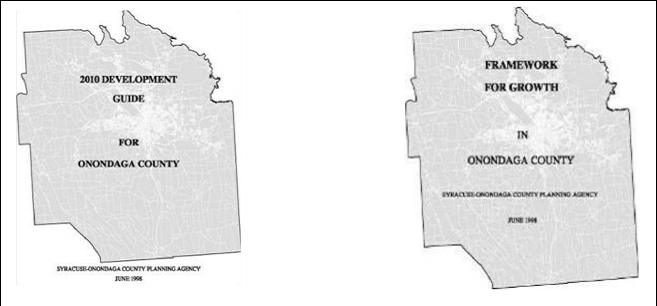
 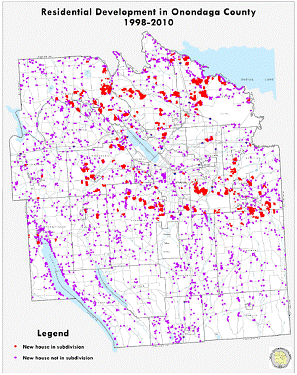
 
 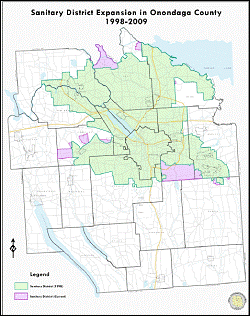
 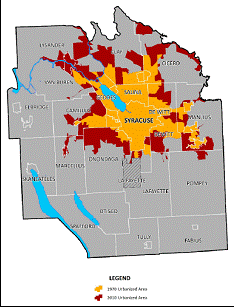
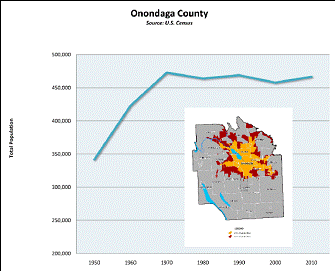 
 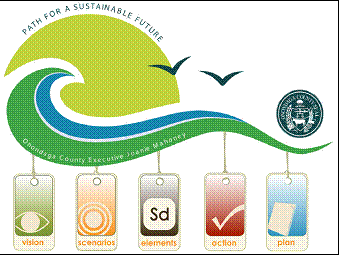
 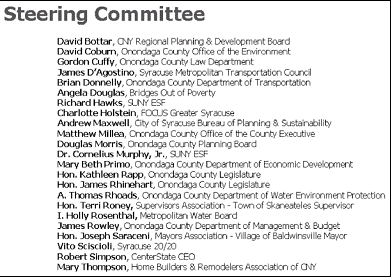
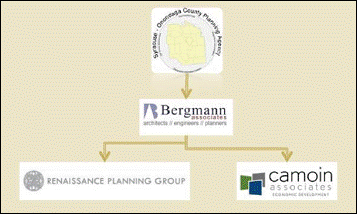 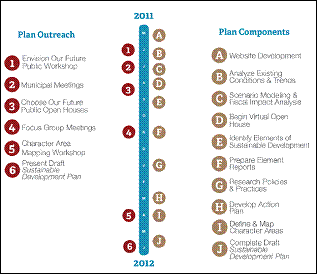
 
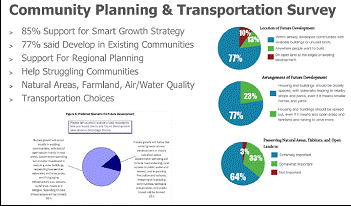 
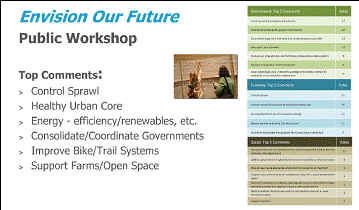 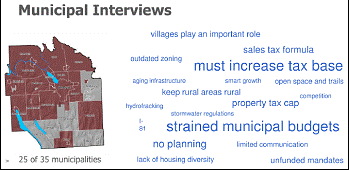
  
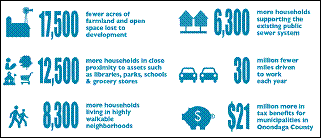 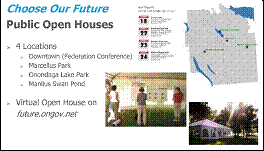
  
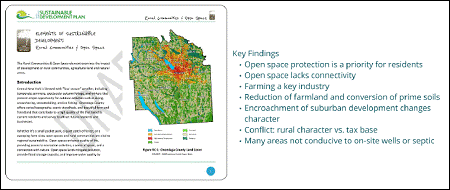
 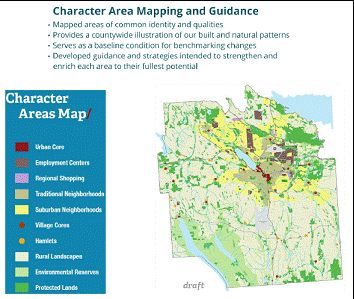
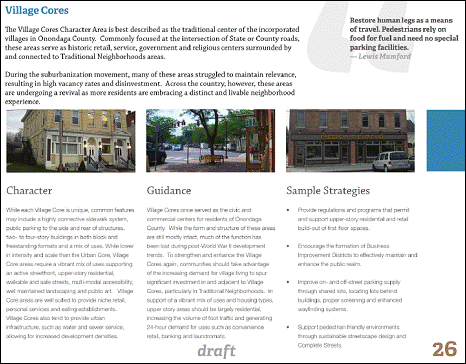

 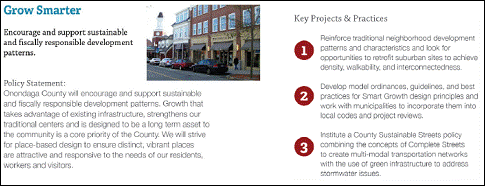
- Similar guidelines for each town; work with each municipality to work the concepts of this plan into their local plan
- NY is a Home Rule state - land use decision making at municipal level; can choose to ignore the plan; wanted to get the ideas from municipalities into the plan and work with them; ultimately something they would need to want to do
- Not looking at a Home Rule exception; local knowledge that is valuable; how to provide resources to help municipalities to help incorporate these concepts; make it worthwhile to do; sustainability development fiscally yields benefits; how to help and/or incentivize municipalities to do things consistent with the sustainability plan
- County Executive talked about in State of County address – look to provide resources to help municipalities do things consistent with this plan
Chair Rapp asked if this would include offering grants for current infrastructure, or pilot programs in terms of tax reductions for home builders. Mr. Jordan responded he is not sure what shape it will take, but they are throwing around some ideas.
Mr. Millea commented there is nothing about overriding Home Rule. The point of this is if communities choose to go outside the sustainability plan, then these funds would not be available to them for infrastructure improvements or tax credits; no number in mind yet. The County Executive would like to include something in the budget with this plan and providing a carrot to the communities so they will buy in and adopt it.
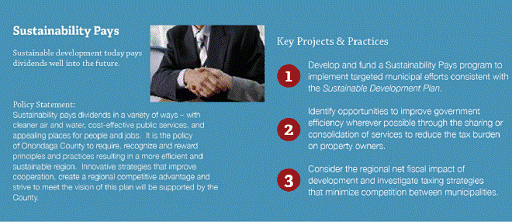


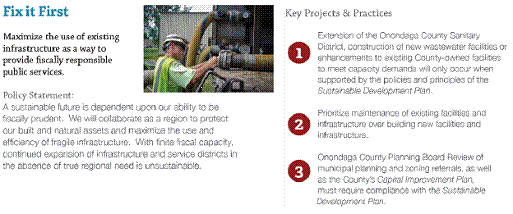
Mr. Millea commented number one under Fix it First is a key element that will be an important discussion between the legislature and County Executive. Of all the elements, this is one the County is most hopeful the towns and villages will support because this is a County decision to be made. Mr. Millea stated they’ve been talking with home builders, and offered to meet with them to discuss this point. The County Executive has been very clear that it is a very important component, and it is not that there will be no sewer expansions, but it will not be easy to get a sewer expansion under this plan.
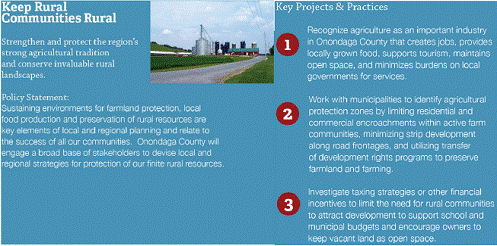

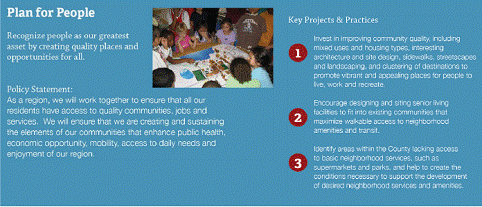
Chair Rapp commented that the population hasn’t changed but the age is changing, and there are far more old people, and far less young people. It is not a great trend. Mr. Millea responded this affects the County from a budgetary aspect as well. Social Services and Long Term Care services are extended, and it becomes a financial burden for those departments that work with those constituents.
  
Mr. Millea stated the website will warehouse all the ordinances, zoning codes and best practices. The County was to develop those best practices by talking with communities to help develop them. Everything will be available on the website. Mr. Jordan commented they want the website to serve as a repository for all the good things going on in the towns, villages and County. It should be publicized and serve as a model for other communities. Mr. Jordan stated he heard this at the Planning Federation Conference where people hear things in theory and may believe it but do not know how to do it. By showing the neighboring community has done this, why they did it and how they did it, it provides a useful tool for people to say they can do it too.
Chair Rapp stated there is a good cross section in this committee with a couple village mayors, and some representing rural areas, and others representing the suburbs and city.
Mr. Plochocki commented this is a great job on the plan and is something that is very much needed. He stated the constituents will have input on this as well.
Mr. Jordan responded to Mr. Liedka that there will be support offered in the initiative for municipalities who have outdated comprehensive plans. Mr. Millea commented it is a key element for communities to develop comprehensive plans that are in line with the themes and ideas of this plan. Mr. Knapp commented that Pompey is starting to get there’s together, and LaFayette is at the tail end of theirs.
Chair Rapp suggested the staff go to the towns and do similar presentations so they understand the County is not coming in to supersede the Home Rule. Mrs. Costa commented this happened at their first meetings with the community where people were wondering what the County is really trying to do, but at the end of the meeting it was a much different feeling. Mrs. Costa stated the meeting was to find out what they need, what they struggle with, what they want to accomplish, and how to collectively get there in a way that works for the region as well. There was a lot of good will put out last year, and she would like to come around again with the same message, and now that the plan is finished, how can the County help them. Chair Rapp commented this is a great way for legislators to get into the districts, get feedback and create something practical. Mr. Jordan stated he would be happy to coordinate with the legislators as they reach out to municipalities to set up those meetings. Mr. Knapp responded to Mr. Millea that they should send an email to the respective legislator if they are heading to a municipality to discuss the plan. Chair Rapp also suggested being added to a town board agenda. Mr. Millea responded that for any community meetings, the legislator will be notified, and staff would be available for the legislature if they wanted to set up public hearings or meetings. Chair Rapp stated this may be a transformational opportunity that the community would like to see.
Mr. Knapp stated that he does not have a grocery store in his entire district. The carbon footprint was discussed, and having to drive quite a ways to a grocery store. Mr. Plochocki responded he has the second largest geographic district, and just five years ago, he did not have a chain restaurant anywhere; only local diners.
Mr. Millea stated Marcellus is under a lot of pressure currently and would be a great place to discuss this plan. It is a great village, so how can it be stronger and grow not just on the northern perimeter. Mr. Millea is interested to see how the community will respond to this, and if they will jump on the “build it here” bandwagon. Mrs. Costa stated not only jumping on with filling in the urbanized area but also the rural villages and hamlets. Focus on making those the centers of the community. If there is a grocery store or neighborhood service that wants to locate to service 30,000 people, where is it best located, and how can they capitalize on the existing activity.
Mr. Millea stated Peter Fleischer, who is part of the Empire State Future a smart growth organization that works statewide, was singing praises of what this staff has done with this report. This could be a model for the state which might drive some grant funding. If this is adopted and the towns get on board, then the County could go to the state and ask for $1 million for comprehensive planning community wide.
Mr. Knapp asked about the village of Tully which is currently on their own municipal water and sewer, and is not affiliated with OCWA. Mr. Millea responded the theme to go with is fix it first. It is always better to develop in the village then somewhere else. Fix it first and be judicious about expansions. Mrs. Costa commented there is an opportunity to densify the villages and have creative thinking with villages. Do some new things, and use the space more wisely.
Mr. Knapp commented all the school districts in his district are working hard to share resources. LaFayette and Fabius recently merged their business offices, and have the same business manager. This was a savings of several hundred thousand dollars. Sports teams are working together. LaFayette kids go to Tully for the ag program, and Tully and Fabius kids go to LaFayette for project Meet the Way engineering program. When looking at a list of suburban schools in reference to budget cuts from the state, those four towns seem to be at the top of the list every time as far as how much is being cut. Mr. Jordan commented this was a recurring theme at municipal meetings with the role of school districts, and how to support those budgets without adding growth. Low density, single family growth isn’t necessarily a money maker for the municipalities, and it creates other challenges for municipal budgets.
The meeting was adjourned at 11:25 a.m.
Respectfully submitted,
Jamie McNamara, Assistant Clerk
Onondaga County Legislature
* * *
FISCAL WAYS AND MEANS COMMITTEE MINUTES – June 15, 2012
CHAIRMAN DAVID KNAPP
MEMBERS PRESENT: Mr. Jordan, Mr. Kilmartin, Mr. Holmquist, Ms. Ervin, Mr. May, Mr. Stanczyk
ALSO PRESENT: see attached list
Chairman Knapp called the meeting to order at 8:50 a.m.
1. COMPTROLLER: Robert Antonacci, II, Comptroller; James Maturo, Deputy Comptroller
a. Comprehensive Annual Financial Report
Mr. Antonacci introduced James Maturo, Deputy Comptroller – Accounting; Phil Britt, Deputy Comptroller-Auditing; Drew Levine, Intern.
Mr. Antonacci:
- From a fiscal standpoint County government is in pretty good shape
- Various ways to judge financial success: metrics, taxing limits, bonding limits – County meets or exceeds those values in every category
- With Mr. Rowley leaving and Mr. Morgan coming on as CFO, it is a good time to reevaluate the dynamics of fund balance policy
- It is the legislature’s policy; there is a new legislature; it is important to talk about what the fund balance policy and what makes up the policy
Fund Balance Policy:
- With Mr. Rowley leaving and Mr. Morgan coming on as CFO, it is a good time to reevaluate the dynamics of fund balance policy
- It is the legislature’s policy and there is a new legislature; it is important to talk about what the fund balance policy is and what makes up the policy
- A great management tool – 10% of general fund revenues
- Heretofore revenues used included: sales tax, property tax, federal & state aid
- In the past the legislature identified that the sales tax pass through to municipalities not be included in total revenue when calculating total fund balance – i.e. if $300 million is collected in sales tax and $100 million is paid out, it would be netted down, and 10% of the lower figure would be taken in calculating what is required for 10% fund balance policy goal
- At one point in time, the legislature said that it didn’t make sense to hold on to what could have been $10 or $12 million of taxpayer money because of passing on money that the County collects
- Interdepartmental revenue – transfers or accounting between departments; indirect cost plan – essential to federal and state reimbursement – great idea to do it, but shouldn’t be holding onto taxpayers’ money because of transferring money between accounts; suggest that it the legislature officially opine that it is not to be included in fund balance revenue
- Prepaid expenses should not be included in fund balance policy calculation. It is money that is essentially required by accounting rules to be included in reserve for fund balance, but it is budgeted for in the upcoming year. It is being double accounted--being included in the calculation, but is already part of subsequent year’s budget.
Mr. Kilmartin asked what the annual estimate is for interdepartmental revenues. Mr. Maturo said that that last year it was approximately $49 million just for the general fund. However, there are interdepartmental charges and revenues throughout all different funds; typically around $50 million annually in general fund. Mr. Kilmartin noted that it circulates through various county departments; it is more of an accounting issue than a cash issue; Mr. Antonacci agreed. Mr. Jordan said that it seems that it artificially inflates revenues, as it is not additional revenue; Mr. Antonacci agreed.
In answer to Mr. Stanczyk about 2011 revenues, Mr. Antonacci referred to the spreadsheet:
|
|
|
|
|
|
Current Method Per |
Proposed Comptroller |
|
Original Method Prior |
Calculation of 2011 10% Fund Bal Goal |
Resolution #184/07 |
Methodology |
|
to Resolution #184/07 |
Actual Revenue |
$ 750,879,445 |
$ 750,879,445 |
|
$ 750,879,445 |
Less: Sales Tax Pass Through |
100,996,847 |
100,996,847 |
|
- |
Interdepartmental Revenue |
- |
48,925,083 |
|
- |
Total Revenue for Fund Balance Calculation |
$ 649,882,598 |
$ 600,957,515 |
|
$ 750,879,445 |
|
|
|
|
|
Fund Balance Goal 10% |
$ 64,988,260 |
$ 60,095,752 |
|
$ 75,087,945 |
|
|
|
|
|
Total Fund Balance |
$ 99,194,072 |
$ 99,194,072 |
|
$ 99,194,072 |
Less: Encumbrances |
3,068,132 |
3,068,132 |
|
3,068,132 |
Prepaid Expenses |
5,286,175 |
- |
|
5,286,175 |
|
|
|
|
|
Unassigned Fund Balance for Calculation |
$ 90,839,765 |
$ 96,125,940 |
|
$ 90,839,765 |
|
|
|
|
|
Amount over the 10% Goal |
25,851,505 |
36,030,189 |
|
15,751,821 |
Appropriated in 2012 budget |
10,419,342 |
10,419,342 |
|
10,419,342 |
Remaining Amount over the 10% Goal |
$ 15,432,163 |
$ 25,610,847 |
|
$ 5,332,479 |
In answer to Mr. Kilmartin, Mr. Rowley said that Comptroller’s proposed methodology makes sense; it is in line with how the County backs out grossed up sales tax. It will lower the amount that has to be kept in fund balance and cautioned the legislature as to the use of that fund balance. Mr. Fisher said that at the time the legislature picked 10%, all of this was known; there is no new information. Mr. Morgan said that the bond agencies look at our policy and hold it in high regard that the legislature adopted the policy. Any change to that policy is going to raise red flags with them. They will ask questions about what will be done with the excess fund balance – how it will be used. The County relies on more volatile revenue streams, such as sales tax.
Mr. May asked for further explanation of the prepaid expenses. Mr. Maturo said that at year end, there is an amount in prepaid expenses; last year it was $5 million. The retirement bill is paid in December, and is actually a bill from April 1st of a year to March 31st of the following year. For Generally Accepted Accounting Principles, because a balance sheet is a snapshot for one day, there is a prepaid expense. It is saying that there has already been paid an amount that will become an expense of the following year. Per GAAP, fund balance has to be reserved for that. However, at the time they are approaching December 31st, the Legislature has already adopted a budget for the next year which includes an appropriation and a revenue stream for prepaid expense. To hold it as a reserved balance is in essence a duplication. The money has already been appropriated and the money is already there to pay it. When the budget is presented, there is a fund balance page in the budget book and prepaid expenses aren’t taken into consideration. During budget review he has had to explain the difference in fund balance used for the 10% calculation and the fund balance that is showing up in the budget book. In his opinion, to reserve fund balance for prepaid expenses is actually a duplication – it is holding back fund balance for the 10% limit, where there is already a methodology in place to make that payment.
Mr. Kilmartin said on a cash basis, the amount has been accounted for during the budget process. Then later in the year, mid to late December, there is accounting move that gives rise to this issue. Mr. Maturo said that by paying in December, the County receives a significant discount, approximately $200,000. Because it is being paid in December, he can’t record it as an expense of that year because it relates to a period that is coming up. The cash has left the county; there is a prepaid expense. At a snapshot on Dec. 31st, there is $5 million that he is going to expense in the next year. Even though the budget is there, he has to show it as a reserve for fund balance for GAAP, but the money is already appropriated and sitting waiting to be spent. In answer to Mr. Kilmartin, Mr. Maturo said that Management and Budget will put in the budget an estimate for the retirement expense for Jan. 1- Dec. 31st of the next year, but the first 3 months have already been paid – cash has left the county.
Mr. May asked if there are any other major prepaid accounts. Mr. Maturo explained that prior to the switching of the payment cycle for the retirement, there was never a significant amount of prepaids to even bother reserving. It only came into play once they starting paying the retirement on December 15th. Mr. Antonacci said that to Mr. Fisher’s point, it has gotten larger. While the legislature may have known that prepaids were part of the fund balance, it wasn’t $5-$7 million, which is going to go higher.
Mr. Stanczyk said that the County is in good financial position because we have been prudent with the way government is handled. There have been some strong winds that have brought in good money from sales tax revenues, but also have had a tremendous reallocation of property taxes away from the county and onto towns and villages. There is a strong desire of legislators to make sure there is a property tax reduction in the towns and villages going forward, He said that he understands that and will be for it. However, it is not free money; it is not found money; it is money that we have been very prudent with. If a different methodology is going to be used to bring us down to a lower bottom line, there has to be an agreement on whether it is taken all at once or strategize how it will be used over a long-term to reduce the property taxes. Prior to Resolution 184-07, we would say there is $15 million over the goal and have already appropriated money for 2012, about a $5 million excess. Using the methodology that was put in place for the $101 million, we are now looking at $15 million over the goal with the monies put into the 2012 budget. With the methodology being proposed, which is probably good and straightforward, we are not saying we are over $25 million over the 10% goal. It is just saying that the money is going to be appropriated; s not going to have excess in sales tax in 2012 like there was in 2011. The $25 million could, in fact, be much higher. Mr. Antonacci said that if everything goes as planned and the budget to actual is dead even, we would finish 12/31/12 with a fund balance in the vicinity of $86 million. Mr. Maturo said that in the perfect world there will be a $10 million deficit at the end of this year; it is a planned deficit. The question is where it will end up at the end of this year.
Mr. Stanczyk asked what the fund balance was 1.5 years ago and 6 months ago. Mr. Maturo said that the fund balance at the start of 2011 was $84.5 million; $14.7 million was tacked on this year. Last year $10.8 million of fund balance went into 2011. That fund balance wasn’t used; it stayed there. Mr. Stanczyk said that right now we are $99 million to the good in fund balance; will anticipate $10.4 million out of fund balance during the year to square up the budget. If we track like last year, we are on the positive side of that. There has to be a balanced budget at the end of every year and except for one year, we have been ahead of that. We have not only conducted affairs prudently, but budgeted prudently as well. County has gone through lean times before when the fund balance was knocked down to scary levels. The AAA rating was taken away. In putting in a new methodology, it puts us in a perilous position based on who is going to be calling for what types of tax cuts based on it.
In answer to Mr. Stanczyk, Mr. Maturo said that GASB determines what generally accepted accounting principles are for municipalities. They changed the way fund balance has to be reported--changed the categories. It used to be reserve for encumbrances and prepaids. Now it is nonspendable, restricted, and assigned. The assigned fund balance used to be reserve for encumbrance; unreserved fund balance would become undesignated. There have always been management designations, which are the County Executive’s intention to spend. Normally the intention to spend includes projects that they plan on doing with the money to usually get the County back to the 10% limit. They are management’s intentions, but they can’t spend that money without coming back to the legislature and getting approval to spend it. Mr. Stanczyk asked how it gets designated without legislative approval. Mr. Maturo explained that management has the ability, for financial statement purposes, to say that they intend to spend “x” amount. Mr. Antonacci explained that it is a way to tell a reader of a financial statement of what is planned for the money. It gives people a flavor of what is going on, but it is not a legal obligation of the county until the legislature says they can spend it. Mr. Maturo said that had it been a legal obligation, it would be included in restricted. Any restrictions that the legislature puts on portions of fund balance, would now show as restricted, as opposed to reserves. Mr. Stanczyk asked if there is a requirement of the County Executive’s office to provide the legislature with a list of designations and associated amounts. Mr. Maturo said that the Comptroller’s office receives a letter each year of management’s designation; it can be provided to the legislature.
Mr. Kilmartin referred to the spread sheet, and asked if he was correct that the calculations do not take into account any increase or decrease above budget for what might flow into general fund budget for 2012. Mr. Antonacci said “correct”.
Mr. Maturo noted that prior to 2007, the numbers for the fund balance policy could be taken right out of the financial statements. They used the fund balance categories that were in the financials and they took budgeted revenues; the 10% calculation was based on that. In 2007 the policy was proposed to be changed – they had to gross up sales tax collected and the amount paid out. By raising revenue, the 10% was in peril - were probably not going to hit the 10% of fund balance. At that point in time, a decision was made to go off of the financial statement, the GAAP presentation, and come up with a different presentation. The Comptroller’s office at the time, felt that this didn’t go far enough. If a different method was to be changed, other than GAAP presented financial statements, then the revenue streams to hold fund balance on should be determined. Volatile revenue streams are not interdepartmental revenues. It was felt that if the double accounting were taken out, then the interdepartmentals should be taken out. If going away from the GAAP basis, then prepaids should not be included, because now there would be a discrepancy from fund balance used for the 10% limit and fund balance used for budget purposes. In the Comptroller’s Office opinion, the proposed change provides true revenue streams that are outside revenue streams; have honed in on specific revenues that are looking to hold fund balance on and have a true fund balance, which is a true unreserved fund balance to apply against the percentage.
Mr. Stanczyk said that the huge sources of revenues are property tax, sales tax, federal and state revenues and some fees. When we say that the budget is $1.15 billion, it is really like a $600 million budget because we count in the pass through of sales tax revenues, count double accounting. Mr. Antonacci agreed and noted that this is only for general fund; there is not a WEP or road machinery fund balance policy.
Mr. Kilmartin asked how much the interdepartmentals have grown or shrunk over the last 5 -10 years. He asked Mr. Rowley or Mr. Morgan for comments on prepaid expenses/double accounting. Mr. Rowley said that that the Comptroller’s opinion on the matter is correct; it is double accounting from the perspective that it is budgeted for in the subsequent budget. If the other revenues streams are taken out, then this should be taken out as well. Mr. Fisher noted that legislators should differentiate in their mind – the technical issue of what gets into a calculation, and the policy guidance based on it. Don’t just say because we are changing the technical way it is calculated, that 10% is still the same number – maybe it’s 11%, 12%, or 8%. That is a policy questions; the Comptroller’s office isn’t speaking as to whether 10% is the right number.
Mr. Stanczyk said that the original intent of the 10% policy was that when it got to 10%, it would be distributed back. Then it was changed to have at least 10%. He argued at that time that it we were handicapping ourselves; that we should think more in terms of a range. A range would provide more flexibility and opportunity in a bad year to still be in a range and still qualify. Mr. Kilmartin noted that the original resolution states “approximately 10%”. Mr. Antonacci referred to the rating agencies and noted that policies are good or bad; policies make the rating agencies’ job easy. He noted that the policy will probably receive scrutiny, but if it is done, debated properly, and opined by the legislature, then it can be explained to the agencies with respect that the County can manage its affairs. Mr. Maturo said that he doesn’t remember any fallout from the policy change in 2007. Mr. Holmquist said that the policy has served us very well; through difficult financial times. The nuances can be argued, but it has done well by us. Mr. Stanczyk said that the important thing is to say what you are going to do. Mr. Jordan said that the blurry the lines are made, the less concrete it is and the chances are more to go beyond the boundaries set. Mr. Stanczyk said if we are redefining what type of fund balance we need, then maybe the percentage should change.
Mr. Antonacci said that he is not advocating that the legislature make any decisions on what is or isn’t returned to taxpayers. He is saying that even without any changes, there is $15 million over the goal.
2. FINANCE: James Rowley, CFO; Steve Morgan
a. First Quarter Report (attachment a)
Mr. Rowley noted that when he started in 2009, he was handed a budget that ended up being $30 million in deficit. The reason why the County ended up in trouble in 2009, is because sales tax revenue that year was far over estimated. That is the year it dropped like a rock and lost about 9% of revenue.
Mr. Rowley noted that they went to the rating agencies last week; all ratings have been maintained. One county is rated ahead of Onondaga, two are rated with us. Everyone else, including the City, is rated below us. $51 million bonds were sold yesterday and the average interest rate on them is 2.96%. One theme that was clear while they were in New York, was that there is reliance on more volatile stream of revenue, sales tax, and have gotten rid of a lot of more reliable revenue, property tax. The County has retained its ratings because of being conservative in how it budgets sales tax revenue. There are counties that are plugging budget gaps by pumping up the volume on sales tax; they are getting in trouble with rating agencies. A lot of them are in cash flow borrowing situations now. He would hate to see the County go down that road by looking at sales tax, having debates about it, and by building in revenues that would cut the levy that aren’t potentially sustainable down the road.
Mr. Rowley said that in the subsequent 3 years, surpluses have been produced. A big part of it is because expenses were cut, down over 500 FTE’s over last years. Also, sales tax has been coming up.
Mr. Rowley referred to the Key Economic and Fiscal Indicators Report (attached):
- Page 2 – From Comptroller’s point projecting to be in deficit because fund balance is allocated; from a budget perspective, it is revenue -- non recurring revenue being used to balance the budget
- Adopted budget estimated $10.4 million in nonrecurring fund balance revenue coming in to balance budget; projected now that it will be $3.8 million lower – use $6.2 million in fund balance projected
- From a Budget perspective, they are projecting a surplus, Comptroller would argue that is really just a lower deficit
Mr. Kilmartin referred to the $10 million allocated from surplus in 2012 budget to help balance the budget. Mr. Rowley said that $4.7 million is allocated to actually plug the budget for 2012. The other piece, reflected in the modified budget, is the major capital program. A lot of bonding authority was sought and it was married with fund balance revenue, $5.7 million out of fund balance and allocated to non-recurring expenditures. The capital projects are funded by non-recurring expenditures out of fund balance, $5.7 million and the authorized debt at the time of the budget. Mr. Kilmartin said in terms of looking at the upcoming budget, we have to focus on the $4.7 million savings that was drawn down and applied to the budget; Mr. Rowley agreed.
In answer to Mr. Stanczyk, Mr. Rowley explained that the carryover of $3.68 million is the reserve for encumbrances. The carryover is needed to balance the modified budget. At the end of the year in 2011, there were purchase orders and contracts produced where we didn’t actually expend the cash on expenses, but were going to. It was a timing issue – didn’t get the chance to spend it. Mr. Maturo explained that there are outstanding contracts and purchase orders that there are commitments to spend at the end of the year. Those commitments were set up using 2011’s appropriations. As those commitments go forward into 2012, a portion of the budget is pulled with that. This number ties out to the reserve for encumbrances, on the sheet provided by the Comptroller. In answer to Mr. Jordan, Mr. Maturo said that it is $3 million that the County has committed to spend but hasn’t received the goods or services yet. Those goods and services should be delivered in 2012. Mr. Stanczyk said that it really isn’t proper to say that there is a $99 million fund balance because, the $3 million is already spent. Mr. Maturo agreed.
Mr. Stanczyk asked what the gross amount projected to be received in sales tax for 2012. Mr. Rowley said that 2012 ended, on a cash basis, 3.15% above actual collections of prior year. They had built in 2.25% increase over that number in the budget. For this forecast, it is projected that sales tax will end up 4% over 2011 actual. The gross number for 2011 was $304 million. The gross number budgeted for 2012 is approximately $310 million. Mr. Stanczyk said that it is tracking 6% over the $304 million, and the forecast is for 4%. Mr. Rowley clarified that on a cash basis it is tracking a little over 6%, but the County gets paid sales tax on a formula basis and the State reconciles the cash payments 6 months down the road. The first quarter reconciled numbers from the State included a swing in the adjustment number of $1.08 million; 2nd quarter numbers aren’t in yet. The 1st quarter in 2011 was a -$200 million adjustment. That is a number for actual sales tax that got filed that the State adjusts the formula payment on. This quarter the number was +$1.6 million. The adjustment number is very volatile. When that number is backed out of the 1st quarter numbers from the State, the increase in sales tax is 4.1%.
Mr. Stanczyk said that more money is coming in; Mr. Rowley said that the projection is $4.2 million extra for revenue in 2012. Mr. Stanczyk referred to the sales tax formula; right now a percentage is distributed to the City; a little to the towns and school districts and the rest is the County’s. Mr. Rowley said $302 million was seen in growth over actual 2011, 3.15% growth over prior year. For 2012 the budget amount was $309 million, total gross portion; 2.25% over $302 million. Now saying that it will grow 4% over $302 million; which is $314 million. Sales tax is a big piece of it. Other factors on the revenue side: more federal inmates at Corrections - an additional $400k projected; inter-annual payment agreement in relation to the Destiny project, approximately $800k at the time the forecast was done. Mr. Fisher said that Destiny has made two quarterly payments on the inter-annual payment, whether they make the 3rd or 4th quarter payments remains to be seen. Mr. Jordan asked why they wouldn’t make the payments. Mr. Fisher said that it is in the hands of lawyers. The City bills PILOT payments on a quarterly basis. Destiny has declared Phase I to be their final phase; what their positions is after the final phase, if subsequent quarterly payments are due or not, is unknown to the County Executives’ office.
Mr. Rowley explained that the offsetting revenue factors are: Aid on interdepartmental charges in Health Department has dropped – have eliminated 36%, Article VI aid, about $307k lost revenue; revenue budget to fund two probation officers – it was budgeted in grants – the expense was moved from operating into grants and bumped up revenue appropriated on grants side, but in error revenue on operating side was kept in, $190k of revenue that won’t be seen. On the expense side, the Sheriff is short approximately $500k in 101 costs because of elimination of Clay contract.
Mr. Stanczyk referred to page 77, CAFR – principal employers and noted that Onondaga County Government is never listed. The County fits in the top 5 of employers; it should be listed there.
The meeting was adjourned at 9:45 a.m.
Respectfully submitted,
DEBORAH L. MATURO, Clerk
Onondaga County Legislature
WAYS AND MEANS COMMITTEE MINUTES – JUNE 15, 2012
David Knapp, Chairman
MEMBERS PRESENT: Mrs. Ervin, Mr. Holmquist, Mr. Jordan, Mr. May, *Mr. Stanczyk
MEMBERS ABSENT: Mr. Kilmartin
ALSO PRESENT: see attached list
Chairman Knapp called the meeting to order at 9:50 a.m. A motion was made by Mr. Jordan, seconded by Mrs. Ervin to waive the reading and approve the minutes of proceedings of the previous meeting. MOTION CARRIED.
CONSENT AGENDA:
1. EMERGENCY MANAGEMENT:
a. Authorizing an Intermunicipal Agreement with the County of Oswego Pursuant to New York State General Municipal Law Section
119-O, to Provide Disaster Assistance
2. WATER ENVIRONMENT PROTECTION:
a. Amending the 2012 County Budget to Accept Funds in Relation to a Project to Develop and Implement an Onondaga Lake
and Tributary Water Quality Notification Program and Authorizing the County Executive to Enter Into Agreements to Implement
the Project ($118,000)
Mr. Stanczyk made a motion to approve the items on the consent agenda, seconded by Mrs. Ervin. Absent: 1 (Kilmartin); Passed unanimously. MOTION CARRIED.
REGULAR AGENDA:
1. FACILITIES MANAGEMENT: Bill Fisher, Deputy County Executive
a. Confirming the Appointment of Duane Owens as Commissioner of Facilities Management
Mr. Fisher:
- Mr. Owens is an experienced manager; athletic; bachelors degree in Economics from Wake Forest
- Worked in hospital sector, Magna, last 6 years at Anheuser Busch
- Has a lot of training in managing individuals; supervised people to do similar work as to Co. Facilities Mngmt.
- Learned a lot of techniques regarding Lean Manufacturing and rigorous control of financials from Steve McCormick, Anheuser Busch
- Mr. Owens has met with Chair Tassone, Co. Facilities Committee; Legislator Kilmartin and Chairman McMahon
- Mr. Owens has met with Brian Lynch, who is very confident that he has what it takes for a smooth transition
-
Mr. Owens came to the County Executive’s attention in late winter/early spring – she reached out to one of his friends to see if he might be interested in joining County government someday; obtained his resume 2-3 months ago. When position of Commissioner of Facilities Management opened up, it led to the decision of the County Executive and Matt Millea to appoint him to the position
A motion was made by Mr. Stanczyk, seconded by Mrs. Ervin to approve this item.
Mrs. Ervin noted that she has known Mr. Owens since he was at New Process Gear; and feels he is a good person for this position.
Mr. Jordan asked if the position was advertised or if the County Executive sought other candidates. Mr. Fisher said that in the private world, when talent is found, the idea is put in one’s mind. When the right position comes up, you fit that person in. The County Executive felt this was an ideal match and felt she didn’t need to look any further. Mr. Jordan asked if he has facilities management experience. Mr. Fisher said that Mr. Owens has managed the assembly line -- maintenance, equipment, janitorial, etc – all things needed to keep an assembly line working - work order systems, scheduling labor, and work with unionized employees.
Chairman Knapp noted on behalf of Mr. Owens, that he wanted to be at the meeting today, but had a medical procedure that couldn’t be rescheduled.
Absent: 1 (Kilmartin); Passed unanimously; MOTION CARRIED.
2. WATER ENVIRONMENT PROTECTION: Tom Rhoads, Commissioner
a. A Resolution Approving Various Green Infrastructure Projects Located Outside the City of Syracuse in and for the
Onondaga Co. Sanitary District of the County of Onondaga ($3,000,000)
Mr. Rhoads:
- Public hearing was held
- Last year Co. Legislature endorsed $3 million for suburban green grants program
- Brunt is to move Save the Rain Program into the suburbs
- Advertised grant process – as a result, $3 million of grants were rewarded to municipalities throughout the county
Mr. Jordan asked what capture goal is. Mr. Rhoads said the goal on this program is somewhat different from the regular Save the Rain Program – where they are trying to capture and remove water from the combined sewer system. In the suburban program, it is inflow and infiltration (I&I) – sources of water coming into the sanitary system at high levels, where the sanitary sewer system capacity is being taken over by inflow and infiltration, basically storm water. This is a way for the towns to resolve their stormwater problems. The stormwater flows into town infrastructure and flows into the County treatment and conveyance system. The goal is to capture as much as possible, approximately $.09/gallon for capture. It if is all I&I, it costs about $2/1,000 gallons to treat. By getting it out of the sanitary system, they are not paying for the chemicals and energy to treat it all. The long term goal is actually preserving the capacity.
Mr. Jordan noted that the anticipated life of improvements is 5 years, as noted in the resolution. Mrs. Tarolli explained that is a definition in the Local Finance Law; bond counsel goes through the list and chooses what is appropriate; it is the time in which there is to pay off the bonds. Mr. Rhoads said that most of the infrastructure will last far longer than that: i.e. porous pavements will last over 10 years; bioretention will last 10 years; subsurface infiltration will last 20 years. Municipalities are responsible for maintenance; it will not be an ongoing maintenance concern for WEP.
A motion was made by Mrs. Ervin, seconded by Mr. Jordan to approve this item.
Mr. May said that he has had experience with clean water inflow and infiltration. It seems there should be a certain amount of effort given towards awareness – impact caused by sump pumps, gutters, etc. He asked if anything could or should be done through this grant approach, or is it being accomplished elsewhere. Mr. Rhoads said that Local Law No. 1–2011 addressed all I&I conditions. He will be meeting with town supervisors next week to talk up the county upgrading the IMA for maintenance of sewer system, and to help them understand it. They have met with the Builders Association and the Realtors Association, because as older properties turn over to sell, there is a process of inspection where they look at the disconnection of some of the residential level things. This project is more of a separate effort on the municipal side to help municipalities with their infrastructure.
Mr. Stanczyk said that he looks forward to the initiatives going forward; agrees with Mr. May that the clean water gets in there. There is a bigger bang for our buck by encouraging rain barrels, disconnect of sump pumps, etc.
Mr. Jordan referred to item d on consent agenda, and asked if this dovetails with it. It is really money to make the community more aware of the consequences of I&I, encourage use of rain barrels, etc. Mr. Rhoads said that the goal is to have much broader communication about all of these issues. A tremendous improvement has been seen on all of the investments that are being made; now at a point where each individual can make a difference.
Mr. Jordan said that one of the greatest returns on investments is the rain barrels. It seems that more of these monies should be taken to either fund or give away rain barrels for individual homeowners because of getting the best return on our investment, and it will have an enormous impact.
Absent: 1 (Kilmartin); Passed unanimously; MOTION CARRIED.
b. A Resolution Authorizing the Issuance of $3,000,000 Bonds of the County of Onondaga, New York, to Pay the Cost of Various Green Infrastructure Projects Located Outside the City of Syracuse in and for the Onondaga County Sanitary District in and for said County ($3,000,000)
A motion was made by Mr. May, seconded by Mrs. Ervin to approve this item. Absent: 1 (Kilmartin); Passed unanimously; MOTION CARRIED.
3. PERSONNEL: Peter Troiano, Commissioner
a. Standard Work Day and Reporting Resolution
Mr. Troiano said that this is part of an ongoing requirement that the County must meet with respect to the NYS Retirement System – reports periodically on elected and appointed officials’ time worked.
A motion was made by Mr. Stanczyk, seconded by Mrs. Ervin to approve this item. Absent: 1 (Kilmartin); Passed unanimously; MOTION CARRIED.
4. PURCHASE: Sean Carroll, Director
a. Revenue Contract Report (on file with Clerk)
Mr. Carroll:
Correction & Sheriff - RFP for Inmate Phone Services & Video Visitation
- Pre-proposal meeting held – carried legislators concerns about abuse of pricing
- Justice Center: average current rate is $.33; ranges $.28/min-$1.21/min-advance pay Puerto Rico & Virgin Islands
- Most collect calls are between $.80 and $1.56/minute; non collect calls are between $.28 and $.45/minute
In answer to Mr. Stanczyk, Mr. Carroll said that for a 10 minute phone call in the US, on average would cost $4.50. Mr. Carroll cautioned that there is some balance of using phone privileges as a tool in the correction facilities. Mr. Stanczyk said the current rates are unacceptable.
Chairman Knapp clarified, that if the call was made collect, the attorney would get the bill. Mr. Jordan said that if it were a situation where someone couldn’t afford to pay for it, then it would be an Assigned Counsel situation. The Assigned Counsel pays the $4.50, not the defendant. Mr. Carroll said that policy discussion should be with Correction and Sheriff.
Mr. Carroll:
- Specific questions have been asked through the RFP, which be an intent to leverage the current vendor’s service
- Incorrect answer given at last meeting – Medical video visitation is part of the RFP; consideration begins with the 2 facilities being able to talk to each other; there is consideration of medical support services beyond that
Mr. Carroll distributed a summary of Lights on the Lake - revenue & costs:
In 2010 the Onondaga County Parks Department partnered with Galaxy Communications with respect to the Lights on the Lake show. This partnership resulted in the following:
- The elimination of financial risk regarding the success of the show
- The introduction of a New Year’s Eve Event (First Night)
- A massive increase in advertising
- Record attendance
Before the 2010 show, Onondaga County Parks operated every aspect of the show, including promotions, and undertook all of the financial risk regarding the Lights on the Lake show.
Between 2006 and 2009, the show received an average of $334,040 in Revenue.
-
Sponsorship Revenue accounted for an average of $69,349
-
All other revenue accounted for an average of $264,691.
Over this same period of time, the expenses were an average of $324,257:
- Capital expenses (which included rehabilitating old displays as well as purchasing new ones) totaled an average of $62,243.
- Operating expenses averaged $262,014 from 2006 to 2009. Of the operating expenses, an average of $10,365 was spent on promotions/advertising.
For the 2010 show and the 2011 show, Onondaga County Parks partnered with Galaxy Communications. The results were:
- Onondaga County Parks bore no financial risk since the contract with Galaxy Communications ensured that Onondaga County Parks would receive at least $320,000 each year.
- A New Year’s Eve Event, “First Night” was started which offers a family friendly option for New Year’s Eve. This event was financed and operated by Galaxy Communications. Attendance averaged over 7,500 people per year.
- Galaxy Communications assumed all responsibility for the financial risk and promotional expense of the Lights on the Lake show. Galaxy spent approximately $750,000 per year of advertising for the event.
- The show has been running for 21 years and the two highest years of attendance were in 2010 and 2011.
In 2012, an RFP Process was conducted and the contract was awarded to Galaxy Events. The new contract is not signed but some of the components of the contract will be:
- Onondaga County Parks will not bear any financial risk since Galaxy Events will put forward a minimum cash commitment of $320,000 payable directly to Onondaga County Parks, regardless of attendance at the show. The estimated operational expenses of Onondaga County Parks to operate the Lights on the Lake show for 2012 is $250,000. This leaves $70,000 for new investment and rehabilitation regarding the show.
- Galaxy Events will plan and produce the First Night CNY event. Galaxy Events will commit $100,000 in cash to the production and execution of this event.
- Galaxy Events will allocate over $948,000 in advertising support for the 2012 show. Galaxy Events will also manage all sponsorship regarding the show.
- Onondaga County Parks retains all rights regarding the operation of the show, approval of advertising, placement of advertising in Onondaga Lake Park, and the New Year’s Eve Event.
Mr. Carroll:
- Before Lights on Lake was subcontracted out, the show brought in approx. $334k; expenses were approx $324k
- It only takes a couple of days of heavy snow or rain to change the revenue number
- 2012 – contract with Galaxy Events - all county expenses are covered
- County Costs are $250k, offset by $320k coming in from Galaxy, leaving $70k for new investments/displays
- Galaxy allocates $900k in advertising; manages New Years Eve show
Skyline lodge
- Catering services contract ended; has been put out for RFP, which included several different models
- Responses are being evaluated
5. VAN DUYN: James Rowley, CFO
a. Amend 2012 Budget to Allow Van Duyn to Claim Retroactive IGT Funds for 2010 ($9,050,636)
Mr. Rowley:
- Asking for allocation from fund balance, $3.5 million to draw down $9 million in IGT fund
- Negotiating transfer of Van Duyn; it’s not going to occur in 2012
- This money will carry Van Duyn through 2013
- Money goes into Van Duyn’s fund balance
Mr. Rowley asked that the resolution be amended to remove the revenue section; it is not needed – the money will go into Van Duyn’s surplus and be used in future years.
In answer to Mr. Jordan, Mr. Rowley said it is clearly the intention that the transfer/sale of Van Duyn will happen. Mr. Jordan questioned if the County should continue along the path of negotiating with Upstate or open it up to everybody. Mr. Rowley said that he can’t speak to it specifically, but it not a dead deal yet so they will continue to pursue it. Unless it is known definitely that it won’t occur with Upstate, then they are not inclined to go to another vendor. Mr. Jordan said that optimally this money will hold us over until a transfer is effected regardless of who it is. He hates to see this buying time, limping along with a deal with Upstate, and then it falls apart. Then it takes a year or so to effect a transfer, and in the mean time the County doesn’t have this money set aside and the taxpayers would be bearing the brunt. Mr. Rowley said that there will be more clarity towards the end of the year.
Mrs. Ervin said that realistically there is no other vendor that wants Van Duyn; have to pray and hope it gets successfully transferred to Upstate. It is a facility with 500 beds that nobody wants.
A motion was made by Mrs. Ervin to amend the resolution to remove the revenue section, seconded by Mr. Jordan. Absent: 1 (Kilmartin); Passed unanimously; MOTION CARRIED.
Mr. Rowley noted that $3.5 million of fund balance use would come from 2012 surplus, which was part of the County Executive’s designation – intention to spend. In answer to Mr. May, Ms. Gile said that $10.4 million was budgeted out of Van Duyn’s fund balance. Mr. Rowley said that nothing more is anticipated out of general for Van Duyn through 2013.
A motion was made by Mrs. Ervin, seconded by Mr. May to approve this item as amended. Absent: 1 (Kilmartin); Passed unanimously; MOTION CARRIED.
*Mr. Stanczyk left the meeting.
6. COMMUNITY DEVELOPMENT: Robert DeMore, Director
a. Authorizing the Onondaga County Executive to File the 2012 Action Plan for the Community Development Block Grant,
Home Grant and Emergency Solutions Grant Programs
Mr. DeMore:
- Action Plan approved by Steering Committee in the Spring
- Basic federal money, CDBG, Home Grant and Shelter grant
- New money is $2.528 million; $3.4 million includes balances from prior years that get rolled forward
- All projects in towns and villages
- Funds have been cut over the years
A motion was made by Mrs. Ervin, seconded by Mr. Holmquist to approve this item. ABSENT: 2 (Kilmartin, Stanczyk); Passed unanimously; MOTION CARRIED.
b. Amending the 2012 County Budget to Accept a Grant from the U.S. Department of Housing and Urban Development for
the Lead-Based Paint Hazard Control Program and Authorizing the County Executive to Enter Into Contracts to
Implement this Resolution ($2,480,000)
Mr. DeMore:
- Lead grant for $2.5 million
- $20 million in lead grants over years; starting to run short of houses in the county – have gotten the easy ones
- Will start working in the City on this also for the lead window program
- Aggressive with marketing – need more customers
In answer to Chairman Knapp, Mr. DeMore said that the Health Dept. gets about $250k out of the $2.5 million. Health Department has classes and outreach; he goes to them also with other staff members.
Mr. Jordan asked if the city gets their own community development money; Mr. DeMore said that they do. Mr. Jordan said that if the city can independently get their own lead funds, then these funds should really be allocated to non-city areas. Mr. DeMore said that numbers are dropping, so they need more volume. By HUD standards, they have to do approximately $100,000 in windows per month. It is a lot of windows, so he has to look in the city. Mr. May asked if it will continue to fund suburbs. Mr. DeMore said that it will; the projects are out there, and they are working hard to find them.
Mr. Jordan asked what is being done to increase awareness that these monies are available. They have cards, attend parades, go to events, will have a booth at the State Fair; posters will be put around neighborhoods. Mr. Jordan asked if the information cards are provided to town clerk’s offices. Mr. DeMore said that they are, and the information is on the town websites. He has met with the Supervisors Association.
A motion was made by Mrs. Ervin, seconded by Mr. Jordan to approve this item. Absent: 2 (Kilmartin, Stanczyk). Passed unanimously; MOTION CARRIED.
The meeting was adjourned at 10:35 a.m.
Respectfully submitted,
DEBORAH L. MATURO, Clerk
Onondaga County Legislature
|


















































